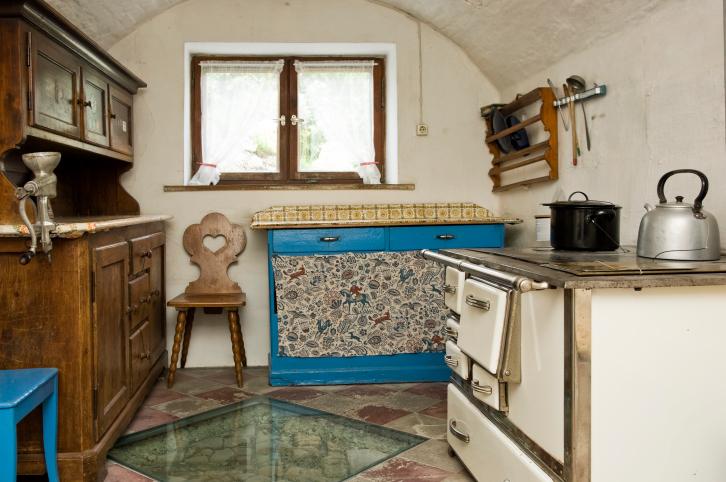
It’s no secret that life in Stalin’s Soviet Union was a constant kick in the pants for most people. Massive food shortages, political oppression, widespread bans, KGB spying and don’t forget the gulags! Of course hardship also extended to more mundane aspects of life, including the massive housing shortage that forced thousands to live in cramped, communal apartments—sometimes with just one bathroom for up to 20 families.
When Nikita Khurshchev emerged as Soviet leader in 1953 and vowed to address the housing shortage, no one realized the critical function that individual-family kitchens would have on Soviet civic life. Suddenly, people had a private gathering place to speak freely, exchange art and vent without fear of reprisal.
Thawing Begins
To be sure, the prefabricated buildings erected for housing—called khrushchevkas after the new leader (cute!)—were modest edifices. "They were horribly built; you could hear your neighbor," says one former-resident. The apartments had small toilets, low ceilings and tiny kitchens.
But "no matter how tiny it was, it was yours. This kitchen was the place where people could finally get together and talk at home without fearing the neighbors in the communal flat,” says former BBC editor Masha Karp.
These private kitchens served as emblems of the new era of Soviet life under Khrushchev, which was somewhat less-regressive than before. "It was called a thaw, and for a reason," says Karp.
Kitchen Table Talk
Among their typical functions as places for sustenance, the individual kitchens became hot spots of culture. With virtually no other places to safely congregate for the free expression of ideas, kitchens allowed for private gatherings. Family and friends joined to play banned music and Western radio news, read forbidden literature, exchange original papers and debate politics. Kitchens even served as unofficial art exhibitions, dance clubs, bars and even places to meet prospective dates. (Who doesn’t like flirting with mom and pops just around the corner?)
Passionate discussions could last into the wee hours, over Russian comfort food like pickled cabbage, boiled potatoes, sardines, sprats and herring (“Sour is the taste of Russia,” explains one European kitchen Russian writer.) The kitchen’s significance for society even made its way into language—to this day political boasting is referred to as “kitchen table talk.”
Ever-Present Fear
But even within these seeming safe havens, those old rat-bastards, the KGB, lingered as constant surveillance threats. People wary of bugs and hidden microphones would unplug their phones and run water to try to block out prying ears during gatherings. One professor remembers that “[s]ometimes there would be KGB agents stationed outside the apartments and in the stairwells. During those times we expected to be arrested any night."
Even so, people continued to seek ideological refuge with each other in the kitchen, which ultimately helped subversive thought to grow and expand in the Soviet Union. Granted, it took nearly another four decades for the system to collapse. But who knows—maybe without this modicum of culinary privacy, we’d still be playing out the Cold War, nuclear bomb drills and all.
Image: Thinkstock






